#this took forever
Text
Behold the kh relationship chart I've put my blood sweat and tears into all afternoon but I had a lot of fun making it (It reads from left to right btw)

Here's a blank version for those interested in making their own:
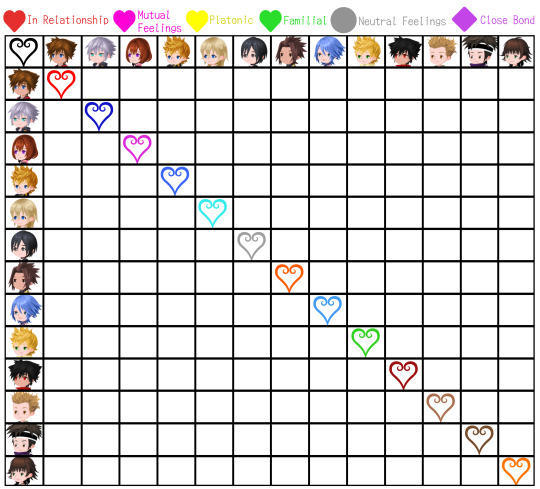
#kingdom hearts#kh#soriku#vanven#kailette#roxner#namixi#this took FOREVER#but i had fun#i never wanna look at another yellow heart again HGFJDSFHDS
21 notes
·
View notes
Text
“ WHAT GETS THEM HARD! ”




jjk men x f!reader ࿐ MDNI.
ᰔ、summary. jjk scenarios on how their dicks get hard ofc
ᰔ、tags. (ft. gojo, geto, toji, choso), nsfw, female anatomy, cunnilingus, exhibitionism, sexting, masturbation, etc.
ᰔ、a/n. these are just my silly depictions. if u dont agree idgaf lol


SATORU GOJO has the dirtiest mind and the highest sex drive. his pants definitely start feeling a little tighter at the sight of you eating a popsicle or something. specifically in public. he would have no shame in it either—casually forming a smirk on his face and dropping a snarky innuendo about the way you’re eating. “can you suck me off like that when we get home?” he’d mumble from across the table, his eyes peeking out from the top of his glasses, a smirk plastered on his lips; wet from the constant licking of his tongue. your eyes widen, a small ‘pop’ sounding from your mouth when you took the frozen sweet out to gasp at the man in front of you. “gojo! are you serious?” you’d yell in a whisper, looking around to see if anyone had heard him. “you’re right,” he’d sigh, standing up from his chair to reveal the very prominent and very obvious bulge in his pants. “we should just do it now.”
SUGURU GETO on the other hand is a polite man. like satoru, he’s a real freak in the sheets—but not as shamelessly. the littlest things can get him hard for sure, but unintentionally seeing your undergarments would really get him going. like an accidental peek at your panties from under your skirt, or a shirt thats a little too see-through showing off the print on your bra. he wouldn’t say anything of course, not right away. you would just be minding your own business one minute and then he’s dragging you towards the bedroom the next. “sugu- what are you-?” you would ask in a confusing tone, craning your head to look at the said man who was now behind you—pushing your stomach up against the countertop; a single hand brought up to grope your breast while the other laid flat against your hip. “your bra is showing.” he’d let you know blankly; an attempt to distract you while his hand slid it’s way into your pants. you would look down in response to his comment, noticing that your bra was in-fact showing like he said. unfortunately for him, you also already noticed the hardon pressed against your back.
TOJI FUSHIGURO gets hard from eating pussy. simple as that. he will get embarrassingly sloppy—juices coating his face and dripping down his chin, loving every second of it while his cock slowly grows harder. emphasis on grows. and if you think for a second that he does it for your pleasure, think again. this man will eat you out purely for his enjoyment only. his eyes are closed and his hands are squeezing at your thighs—legs thrashing uncontrollably from the uncomfortable pressure in his pants that’s about to come undone. “toji- let me help you.” you’d beg with a whimper, dragging your hand from the top of his head down to his cheek when you noticed the constant shuffling of his legs and the crease in his eyebrow. he’d laugh darkly, the breathy snicker creating a hum between your core that made a whine escape from your lips. “im fine mama,” he’ll say cockily, pulling a hand away from your leg to undo his zipper. “ill cum soon, you don’t gotta do ‘nun.”
CHOSO is a needy guy. his face will turn red at a simple flirty text—but send him a slutty pic and he might just cream his pants. fully naked or dressed in lingerie, his favorite or not, he will definitely feel some pressure down below. he might ignore you for a while, uncertain on how he should reply; if he’s even able to. “fuck- couldn’t wait till i got home, could you?” he’d whine quietly, trying his best to keep his voice down from the bathroom of his office job; one hand holding the phone up to his ear while the other rushed to unbuckle his belt. “sorry cho,” you’d apologize from the other line, voice rather faint as you posed for another picture to send him. “when are you coming?” you ask doubtfully just as his phone vibrates with another notification from your contact. “now- im comin’ now baby.” he replies with a huff, phone almost slipping from his ear. “really!?” you try to clarify—much more excited than the first time. “no, i mean im cumming. right now.”


#my goofy ahh side coming out with the choso one#THIS TOOK FOREVER#toji x reader#toji smut#jjk#jujutsu kaisen#gojo x reader#gojo smut#geto x reader#geto smut#choso x reader#choso smut#jjk scenarios#jjk x reader#jjk men x reader#jjk smut#isamoa#jujutsu kaisen smut
18K notes
·
View notes
Text
Fantasy Guide to Interiors



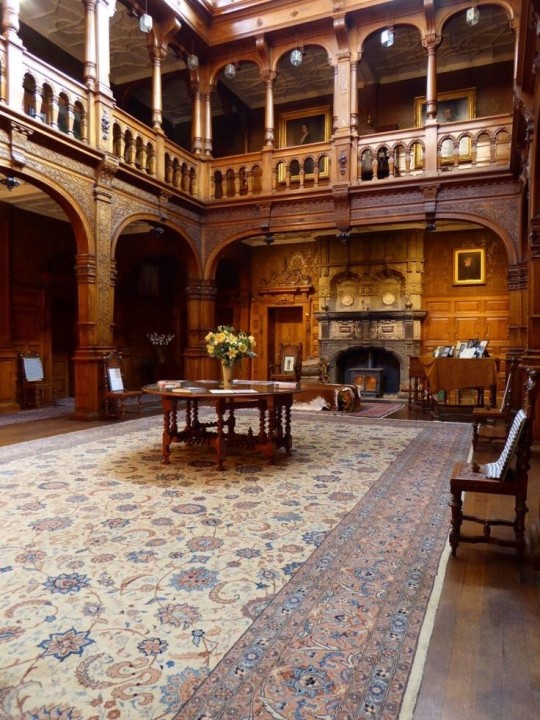
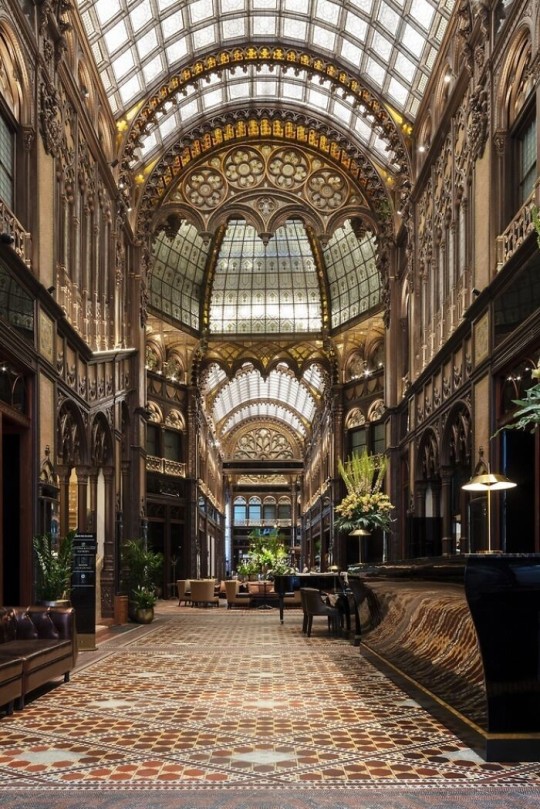
As a followup to the very popular post on architecture, I decided to add onto it by exploring the interior of each movement and the different design techniques and tastes of each era. This post at be helpful for historical fiction, fantasy or just a long read when you're bored.
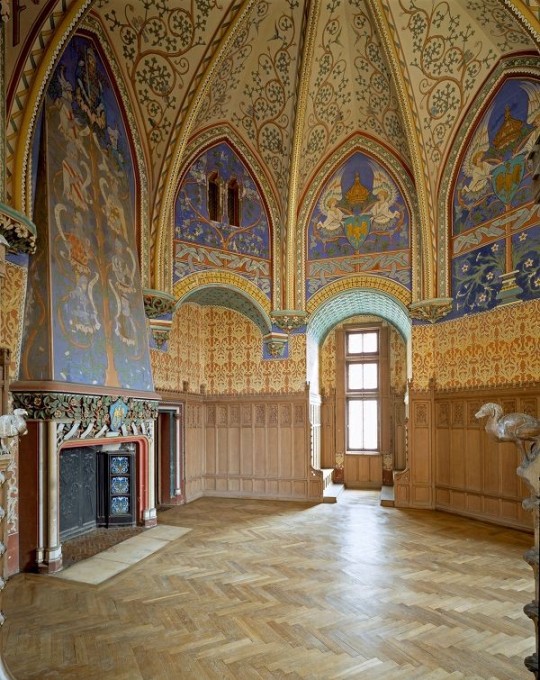


Interior Design Terms
Reeding and fluting: Fluting is a technique that consists a continuous pattern of concave grooves in a flat surface across a surface. Reeding is it's opposite.
Embossing: stamping, carving or moulding a symbol to make it stand out on a surface.
Paneling: Panels of carved wood or fabric a fixed to a wall in a continuous pattern.
Gilding: the use of gold to highlight features.
Glazed Tile: Ceramic or porcelain tiles coated with liquid coloured glass or enamel.
Column: A column is a pillar of stone or wood built to support a ceiling. We will see more of columns later on.
Bay Window: The Bay Window is a window projecting outward from a building.
Frescos: A design element of painting images upon wet plaster.
Mosaic: Mosaics are a design element that involves using pieces of coloured glass and fitted them together upon the floor or wall to form images.
Mouldings: ornate strips of carved wood along the top of a wall.
Wainscoting: paneling along the lower portion of a wall.
Chinoiserie: A European take on East Asian art. Usually seen in wallpaper.
Clerestory: A series of eye-level windows.
Sconces: A light fixture supported on a wall.
Niche: A sunken area within a wall.
Monochromatic: Focusing on a single colour within a scheme.
Ceiling rose: A moulding fashioned on the ceiling in the shape of a rose usually supporting a light fixture.
Baluster: the vertical bars of a railing.
Façade: front portion of a building
Lintel: Top of a door or window.
Portico: a covered structure over a door supported by columns
Eaves: the part of the roof overhanging from the building
Skirting: border around lower length of a wall
Ancient Greece
Houses were made of either sun-dried clay bricks or stone which were painted when they dried. Ground floors were decorated with coloured stones and tiles called Mosaics. Upper level floors were made from wood. Homes were furnished with tapestries and furniture, and in grand homes statues and grand altars would be found. Furniture was very skillfully crafted in Ancient Greece, much attention was paid to the carving and decoration of such things. Of course, Ancient Greece is ancient so I won't be going through all the movements but I will talk a little about columns.
Doric: Doric is the oldest of the orders and some argue it is the simplest. The columns of this style are set close together, without bases and carved with concave curves called flutes. The capitals (the top of the column) are plain often built with a curve at the base called an echinus and are topped by a square at the apex called an abacus. The entablature is marked by frieze of vertical channels/triglyphs. In between the channels would be detail of carved marble. The Parthenon in Athens is your best example of Doric architecture.
Ionic: The Ionic style was used for smaller buildings and the interiors. The columns had twin volutes, scroll-like designs on its capital. Between these scrolls, there was a carved curve known as an egg and in this style the entablature is much narrower and the frieze is thick with carvings. The example of Ionic Architecture is the Temple to Athena Nike at the Athens Acropolis.
Corinthian: The Corinthian style has some similarities with the Ionic order, the bases, entablature and columns almost the same but the capital is more ornate its base, column, and entablature, but its capital is far more ornate, commonly carved with depictions of acanthus leaves. The style was more slender than the others on this list, used less for bearing weight but more for decoration. Corinthian style can be found along the top levels of the Colosseum in Rome.
Tuscan: The Tuscan order shares much with the Doric order, but the columns are un-fluted and smooth. The entablature is far simpler, formed without triglyphs or guttae. The columns are capped with round capitals.
Composite: This style is mixed. It features the volutes of the Ionic order and the capitals of the Corinthian order. The volutes are larger in these columns and often more ornate. The column's capital is rather plain. for the capital, with no consistent differences to that above or below the capital.
Ancient Rome
Rome is well known for its outward architectural styles. However the Romans did know how to add that rizz to the interior. Ceilings were either vaulted or made from exploded beams that could be painted. The Romans were big into design. Moasics were a common interior sight, the use of little pieces of coloured glass or stone to create a larger image. Frescoes were used to add colour to the home, depicting mythical figures and beasts and also different textures such as stonework or brick. The Romans loved their furniture. Dining tables were low and the Romans ate on couches. Weaving was a popular pastime so there would be tapestries and wall hangings in the house. Rich households could even afford to import fine rugs from across the Empire. Glass was also a feature in Roman interior but windows were usually not paned as large panes were hard to make. Doors were usually treated with panels that were carved or in lain with bronze.
Ancient Egypt
Egypt was one of the first great civilisations, known for its immense and grand structures. Wealthy Egyptians had grand homes. The walls were painted or plastered usually with bright colours and hues. The Egyptians are cool because they mapped out their buildings in such a way to adhere to astrological movements meaning on special days if the calendar the temple or monuments were in the right place always. The columns of Egyptian where thicker, more bulbous and often had capitals shaped like bundles of papyrus reeds. Woven mats and tapestries were popular decor. Motifs from the river such as palms, papyrus and reeds were popular symbols used.
Ancient Africa
African Architecture is a very mixed bag and more structurally different and impressive than Hollywood would have you believe. Far beyond the common depictions of primitive buildings, the African nations were among the giants of their time in architecture, no style quite the same as the last but just as breathtaking.
Rwandan Architecture: The Rwandans commonly built of hardened clay with thatched roofs of dried grass or reeds. Mats of woven reeds carpeted the floors of royal abodes. These residences folded about a large public area known as a karubanda and were often so large that they became almost like a maze, connecting different chambers/huts of all kinds of uses be they residential or for other purposes.
Ashanti Architecture: The Ashanti style can be found in present day Ghana. The style incorporates walls of plaster formed of mud and designed with bright paint and buildings with a courtyard at the heart, not unlike another examples on this post. The Ashanti also formed their buildings of the favourite method of wattle and daub.
Nubian Architecture: Nubia, in modern day Ethiopia, was home to the Nubians who were one of the world's most impressive architects at the beginning of the architecture world and probably would be more talked about if it weren't for the Egyptians building monuments only up the road. The Nubians were famous for building the speos, tall tower-like spires carved of stone. The Nubians used a variety of materials and skills to build, for example wattle and daub and mudbrick. The Kingdom of Kush, the people who took over the Nubian Empire was a fan of Egyptian works even if they didn't like them very much. The Kushites began building pyramid-like structures such at the sight of Gebel Barkal
Japanese Interiors
Japenese interior design rests upon 7 principles. Kanso (簡素)- Simplicity, Fukinsei (不均整)- Asymmetry, Shizen (自然)- Natural, Shibumi (渋味) – Simple beauty, Yugen (幽玄)- subtle grace, Datsuzoku (脱俗) – freedom from habitual behaviour, Seijaku (静寂)- tranquillity.
Common features of Japanese Interior Design:
Shoji walls: these are the screens you think of when you think of the traditional Japanese homes. They are made of wooden frames, rice paper and used to partition
Tatami: Tatami mats are used within Japanese households to blanket the floors. They were made of rice straw and rush straw, laid down to cushion the floor.
Genkan: The Genkan was a sunken space between the front door and the rest of the house. This area is meant to separate the home from the outside and is where shoes are discarded before entering.
Japanese furniture: often lowest, close to the ground. These include tables and chairs but often tanked are replaced by zabuton, large cushions. Furniture is usually carved of wood in a minimalist design.
Nature: As both the Shinto and Buddhist beliefs are great influences upon architecture, there is a strong presence of nature with the architecture. Wood is used for this reason and natural light is prevalent with in the home. The orientation is meant to reflect the best view of the world.
Islamic World Interior
The Islamic world has one of the most beautiful and impressive interior design styles across the world. Colour and detail are absolute staples in the movement. Windows are usually not paned with glass but covered in ornate lattices known as jali. The jali give ventilation, light and privacy to the home. Islamic Interiors are ornate and colourful, using coloured ceramic tiles. The upper parts of walls and ceilings are usually flat decorated with arabesques (foliate ornamentation), while the lower wall areas were usually tiled. Features such as honeycombed ceilings, horseshoe arches, stalactite-fringed arches and stalactite vaults (Muqarnas) are prevalent among many famous Islamic buildings such as the Alhambra and the Blue Mosque.
Byzantine (330/395–1453 A. D)
The Byzantine Empire or Eastern Roman Empire was where eat met west, leading to a melting pot of different interior designs based on early Christian styles and Persian influences. Mosaics are probably what you think of when you think of the Byzantine Empire. Ivory was also a popular feature in the Interiors, with carved ivory or the use of it in inlay. The use of gold as a decorative feature usually by way of repoussé (decorating metals by hammering in the design from the backside of the metal). Fabrics from Persia, heavily embroidered and intricately woven along with silks from afar a field as China, would also be used to upholster furniture or be used as wall hangings. The Byzantines favoured natural light, usually from the use of copolas.
Indian Interiors
India is of course, the font of all intricate designs. India's history is sectioned into many eras but we will focus on a few to give you an idea of prevalent techniques and tastes.
The Gupta Empire (320 – 650 CE): The Gupta era was a time of stone carving. As impressive as the outside of these buildings are, the Interiors are just as amazing. Gupta era buildings featured many details such as ogee (circular or horseshoe arch), gavaksha/chandrashala (the motif centred these arches), ashlar masonry (built of squared stone blocks) with ceilings of plain, flat slabs of stone.
Delhi Sultanate (1206–1526): Another period of beautifully carved stone. The Delhi sultanate had influence from the Islamic world, with heavy uses of mosaics, brackets, intricate mouldings, columns and and hypostyle halls.
Mughal Empire (1526–1857): Stonework was also important on the Mughal Empire. Intricately carved stonework was seen in the pillars, low relief panels depicting nature images and jalis (marble screens). Stonework was also decorated in a stye known as pietra dura/parchin kari with inscriptions and geometric designs using colored stones to create images. Tilework was also popular during this period. Moasic tiles were cut and fitted together to create larger patters while cuerda seca tiles were coloured tiles outlined with black.
Chinese Interiors
Common features of Chinese Interiors
Use of Colours: Colour in Chinese Interior is usually vibrant and bold. Red and Black are are traditional colours, meant to bring luck, happiness, power, knowledge and stability to the household.
Latticework: Lattices are a staple in Chinese interiors most often seen on shutters, screens, doors of cabinets snf even traditional beds.
Lacquer: Multiple coats of lacquer are applied to furniture or cabinets (now walls) and then carved. The skill is called Diaoqi (雕漆).
Decorative Screens: Screens are used to partition off part of a room. They are usually of carved wood, pained with very intricate murals.
Shrines: Spaces were reserved on the home to honour ancestors, usually consisting of an altar where offerings could be made.
Of course, Chinese Interiors are not all the same through the different eras. While some details and techniques were interchangeable through different dynasties, usually a dynasty had a notable style or deviation. These aren't all the dynasties of course but a few interesting examples.
Song Dynasty (960–1279): The Song Dynasty is known for its stonework. Sculpture was an important part of Song Dynasty interior. It was in this period than brick and stone work became the most used material. The Song Dynasty was also known for its very intricate attention to detail, paintings, and used tiles.
Ming Dynasty(1368–1644): Ceilings were adorned with cloisons usually featuring yellow reed work. The floors would be of flagstones usually of deep tones, mostly black. The Ming Dynasty favoured richly coloured silk hangings, tapestries and furnishings. Furniture was usually carved of darker woods, arrayed in a certain way to bring peace to the dwelling.
Han Dynasty (206 BC-220 AD): Interior walls were plastered and painted to show important figures and scenes. Lacquer, though it was discovered earlier, came into greater prominence with better skill in this era.
Tang Dynasty (618–907) : The colour palette is restrained, reserved. But the Tang dynasty is not without it's beauty. Earthenware reached it's peak in this era, many homes would display fine examples as well. The Tang dynasty is famous for its upturned eaves, the ceilings supported by timber columns mounted with metal or stone bases. Glazed tiles were popular in this era, either a fixed to the roof or decorating a screen wall.
Romanesque (6th -11th century/12th)
Romanesque Architecture is a span between the end of Roman Empire to the Gothic style. Taking inspiration from the Roman and Byzantine Empires, the Romanesque period incorporates many of the styles. The most common details are carved floral and foliage symbols with the stonework of the Romanesque buildings. Cable mouldings or twisted rope-like carvings would have framed doorways. As per the name, Romansque Interiors relied heavily on its love and admiration for Rome. The Romanesque style uses geometric shapes as statements using curves, circles snf arches. The colours would be clean and warm, focusing on minimal ornamentation.
Gothic Architecture (12th Century - 16th Century)
The Gothic style is what you think of when you think of old European cathedrals and probably one of the beautiful of the styles on this list and one of most recognisable. The Gothic style is a dramatic, opposing sight and one of the easiest to describe. Decoration in this era became more ornate, stonework began to sport carving and modelling in a way it did not before. The ceilings moved away from barreled vaults to quadripartite and sexpartite vaulting. Columns slimmed as other supportive structures were invented. Intricate stained glass windows began their popularity here. In Gothic structures, everything is very symmetrical and even.
Mediaeval (500 AD to 1500)
Interiors of mediaeval homes are not quite as drab as Hollywood likes to make out. Building materials may be hidden by plaster in rich homes, sometimes even painted. Floors were either dirt strewn with rushes or flagstones in larger homes. Stonework was popular, especially around fireplaces. Grand homes would be decorated with intricate woodwork, carved heraldic beasts and wall hangings of fine fabrics.
Renaissance (late 1300s-1600s)
The Renaissance was a period of great artistry and splendor. The revival of old styles injected symmetry and colour into the homes. Frescoes were back. Painted mouldings adorned the ceilings and walls. Furniture became more ornate, fixed with luxurious upholstery and fine carvings. Caryatids (pillars in the shape of women), grotesques, Roman and Greek images were used to spruce up the place. Floors began to become more intricate, with coloured stone and marble. Modelled stucco, sgraffiti arabesques (made by cutting lines through a layer of plaster or stucco to reveal an underlayer), and fine wall painting were used in brilliant combinations in the early part of the 16th century.
Tudor Interior (1485-1603)
The Tudor period is a starkly unique style within England and very recognisable. Windows were fixed with lattice work, usually casement. Stained glass was also in in this period, usually depicting figures and heraldic beasts. Rooms would be panelled with wood or plastered. Walls would be adorned with tapestries or embroidered hangings. Windows and furniture would be furnished with fine fabrics such as brocade. Floors would typically be of wood, sometimes strewn with rush matting mixed with fresh herbs and flowers to freshen the room.
Baroque (1600 to 1750)
The Baroque period was a time for splendor and for splashing the cash. The interior of a baroque room was usually intricate, usually of a light palette, featuring a very high ceiling heavy with detail. Furniture would choke the room, ornately carved and stitched with very high quality fabrics. The rooms would be full of art not limited to just paintings but also sculptures of marble or bronze, large intricate mirrors, moldings along the walls which may be heavily gilded, chandeliers and detailed paneling.
Victorian (1837-1901)
We think of the interiors of Victorian homes as dowdy and dark but that isn't true. The Victorians favoured tapestries, intricate rugs, decorated wallpaper, exquisitely furniture, and surprisingly, bright colour. Dyes were more widely available to people of all stations and the Victorians did not want for colour. Patterns and details were usually nature inspired, usually floral or vines. Walls could also be painted to mimic a building material such as wood or marble and most likely painted in rich tones. The Victorians were suckers for furniture, preferring them grandly carved with fine fabric usually embroidered or buttoned. And they did not believe in minimalism. If you could fit another piece of furniture in a room, it was going in there. Floors were almost eclusively wood laid with the previously mentioned rugs. But the Victorians did enjoy tiled floors but restricted them to entrances. The Victorians were quite in touch with their green thumbs so expect a lot of flowers and greenery inside. with various elaborately decorated patterned rugs. And remember, the Victorians loved to display as much wealth as they could. Every shelf, cabinet, case and ledge would be chocked full of ornaments and antiques.
Edwardian/The Gilded Age/Belle Epoque (1880s-1914)
This period (I've lumped them together for simplicity) began to move away from the deep tones and ornate patterns of the Victorian period. Colour became more neutral. Nature still had a place in design. Stained glass began to become popular, especially on lampshades and light fixtures. Embossing started to gain popularity and tile work began to expand from the entrance halls to other parts of the house. Furniture began to move away from dark wood, some families favouring breathable woods like wicker. The rooms would be less cluttered.
Art Deco (1920s-1930s)
The 1920s was a time of buzz and change. Gone were the refined tastes of the pre-war era and now the wow factor was in. Walls were smoother, buildings were sharper and more jagged, doorways and windows were decorated with reeding and fluting. Pastels were in, as was the heavy use of black and white, along with gold. Mirrors and glass were in, injecting light into rooms. Gold, silver, steel and chrome were used in furnishings and decor. Geometric shapes were a favourite design choice. Again, high quality and bold fabrics were used such as animal skins or colourful velvet. It was all a rejection of the Art Noveau movement, away from nature focusing on the man made.
Modernism (1930 - 1965)
Modernism came after the Art Deco movement. Fuss and feathers were out the door and now, practicality was in. Materials used are shown as they are, wood is not painted, metal is not coated. Bright colours were acceptable but neutral palettes were favoured. Interiors were open and favoured large windows. Furniture was practical, for use rather than the ornamentation, featuring plain details of any and geometric shapes. Away from Art Deco, everything is straight, linear and streamlined.
#This took forever#I'm very tired#But enjoy#I covered as much as I could find#Fantasy Guide to interiors#interior design#Architecture#writings#writing resources#Writing reference#Writing advice#Writer's research#writing research#Writer's rescources#Writing help#Mediaeval#Renaissance#Chinese Interiors#Japanese Interiors#Indian interiors#writing#writeblr#writing reference#writing advice#writer#spilled words#writers
3K notes
·
View notes
Text
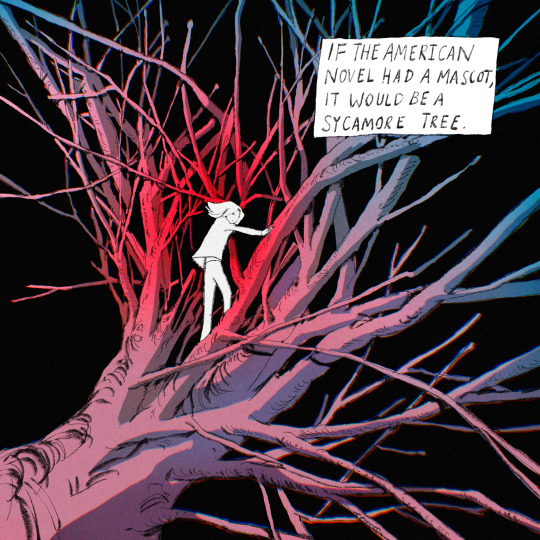





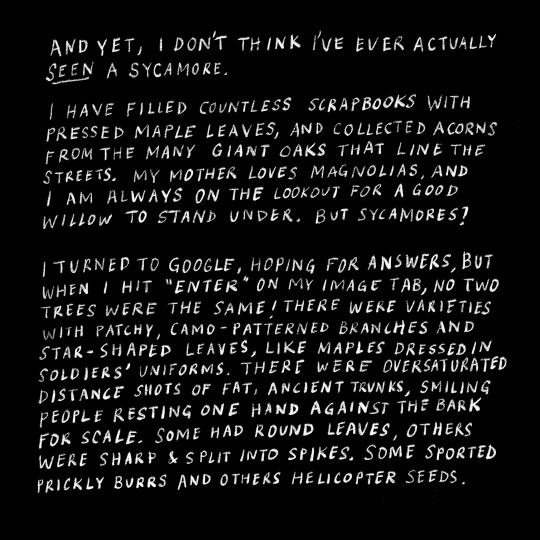

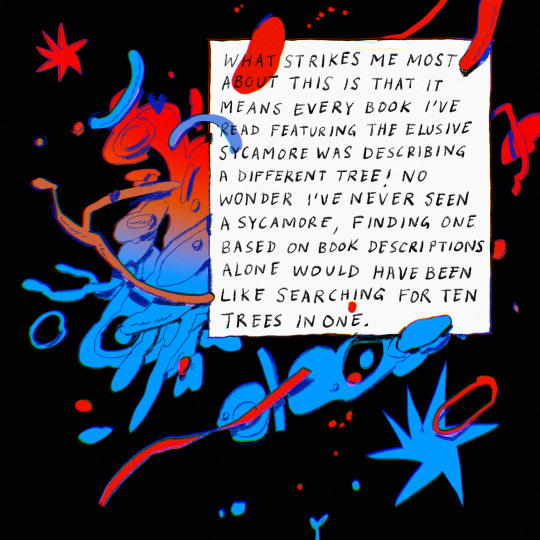

Intro to my English final from senior year (part 1)
#digital art#illustration#digital illustration#procreate#comic art#original comic#comics#i wanna make more comics#this took forever#english class#sycamore tree#sycamore#soupandcats
11K notes
·
View notes
Text
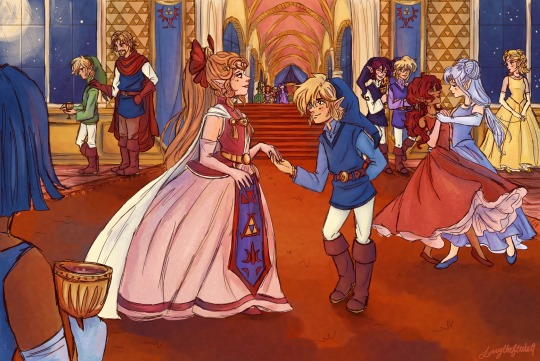
Redraw of a very old piece I’ve always loved! Original is under the cut:
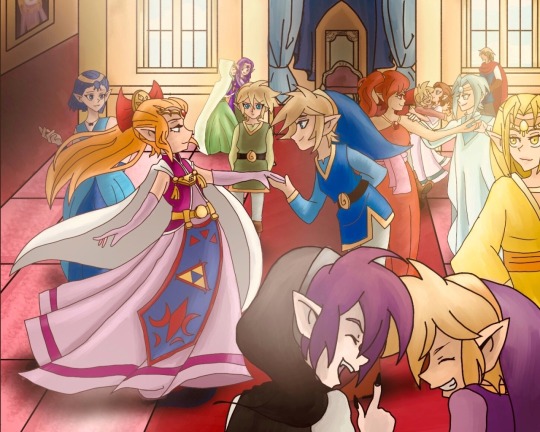
#this took FOREVER#loz#legend of zelda#four swords#fs zelda#blue link#green link#red link#vio link#shadow link#link’s dad#fs maidens#my art
589 notes
·
View notes
Text
[crippled screaming] NO ONE TOUCH ME NO ONE
#THIS TOOK FOREVER#GOD#MY NECK#MY BACK#EVERY BONE CRUNCHED WHEN I FINALLY MOVED FOR THE FIRST TIME IN 5 HOURS#THE SACRIFICES I DO#HEAD IN HANDS#IT HAD TO BE DONE#FUNNY JESTERS HEEHOO#fnaf fandom#fnaf security breach#fnaf daycare attendant#sundrop#moondrop#daycare attendant#sun and moon fnaf#fnaf sb
5K notes
·
View notes
Text

By Your Side
Inspired by HTTYD and this tweet
#my art#artwork#digital art#artists on tumblr#art#link#legend of zelda#zelda#zelink#tears of the kingdom#totk#zelda totk#botw#this took FOREVER#they're all I think about
1K notes
·
View notes
Text
The Ultimate List of Dante References in Hozier's "Unreal Unearth" !!
Hello and welcome to my new-and-updated ultimate compilation of all 'Inferno' references I found in Hozier's new album! If I think of anything else, or if anyone else suggests something, I will be sure to add it, but, for now, enjoy this ridiculously long (you've been warned) list I made!
Since I didn't wanna make a post for every individual song and spam you all, the songs are separated by their respective circles! I hope that organises stuff a bit more :]
Usual disclaimer: I could be wrong about some stuff! I've read 'Inferno' and try to stick to the objective references, but sometimes I let subjective interpretation bleed through. If anyone has any corrections for anything, just lmk!! Okay, cool <3
DESCENT:
"De Selby (Part 1)"
We start the album not in the circles, but instead at the Gates of Hell. One of the main themes of Inferno is darkness, and these first two songs are embodiments of that.
The lyrics mention the idea of this being a "new empty space", suggesting that Hozier is being introduced to the feeling of Inferno through the relationship he's singing about, and, so, we begin the descent.
"The likes of a darkness so deep that God at the start couldn't bear." God is obviously a large theme of Inferno and is, biblically, the creator of light, hence the absence of it in Inferno. In fact, the first three stanzas all reference the heavy darkness of the threshold and its estrangement from God.
The Irish/Gaeilge lyrics roughly translate to: "Although you're bright and light, you arrive to me like night fall. You and I, together. You and I, metamorphized. Although you're bright and light, you arrive to me like night fall. The art of transformation is a dark art." The imagery of light and dark mixing together mimics the idea of walking from the brightness of Earth into the darkness of Inferno.
This entire album appears to be the recounting of a relationship and how it feels like walking through Inferno. Here we see the beginning of this relationship, of Hozier losing himself to the threshold.
"De Selby (Part 2)"
Part one appeared to be the step through the gates, whereas part two seems to be Hozier being enveloped by the threshold. In 'Inferno', Dante says the entrance to Hell is a darkness that no stars could shine in. We hear this shift from Earth to Unearth through the production alone; the weightlessness of part one falling into the heavy grunge of part two.
"Your heart, love, has such darkness, I feel it in the corners of the room." The theme of dark continues, as it will through the entire album, but, this time, Hozier feels it radiating from within his lover rather than the space around them. Though, him saying his lover carries darkness is not an insult. This extra depth to his lover is something more to know, something more to love. This idea actually differs from Dante, who sees the darkness as deceitful.
"I want to be so far from sight and mind." Inferno is a lawless place. He would be far from sight due to the darkness, and far from mind due to the insanity that persists within the circles.
"Let all time slow, let all light go." This lyric shows me that he has been submerged in the threshold. Again, the lack of light, but also the slowing of time. Punishment after death is eternal, something that time has no grasp on. Hozier is willing to let these aspects take a hold of him.
"I'd still know you not being shown you, I'd only need the workin' of my hands." Christianity is a heavy theme of Inferno, and this lyric plays on the proverb 'Idle hands are the devil's workshop', a proverb Hozier also hinted at in his song "No Plan" (from 'Wasteland, Baby!') - "My heart is thrilled by the still of your hand."
Now, though, Hozier's hands aren't idle, instead the opposite, his hands are working as God intended. Drawing us back to that idea we were given at the end of part one, we get the feeling that Hozier is bringing something light/Godly to Inferno, and he and his lover are fusing the ideas of Heaven/Earth and Hell.
FIRST (LIMBO):
"First Time"
We now enter circle number one, 'Limbo'. Limbo is an uneventful circle for those not worthy of punishment but also not fit for Heaven. It is mainly for those who do not believe in God, the unbaptised.
Firstly, to get to circles, Dante and his guide, Virgil, must be chaperoned by the Greek Psychopomp Charon down the river Acheron, and we see that in Hozier's first couple stanzas.
"And the soul - if that's what you'd call it, uneasy ally of the body - felt nameless as a river, undiscovered underground." This appears to be Hozier mentioning the river Acheron, one of the five rivers of the Underworld that surround Hades, and, in 'Inferno', are used to transport the souls of the dead to their respective circles.
"The first time that you kissed me, I drank dry the river Lethe." The river Lethe is another one of the five rivers, and is one that causes anyone who drinks from it to forget everything they know. Hozier is simply saying that kissing this person wiped his mind clean, similar to the end of "De Selby (Part 1)" where he mentions partaking in a transformation.
"Some part of me died / Some part of me came alive the first time that you called me 'Baby'." Relating to the previous quote, souls that drink from the river Lethe usually do so before being reincarnated, so they forget their past life. Hozier seems to experiment with the idea of being reborn by his partner's love for him - an idea prevalent throughout his entire discography.
"To share the space with simple living things, infinitely suffering, but fighting off - like all creation - the absence of itself." This lyric tells us that we should not ignore the privilege of living just out of the fear of dying. This lyric is reminiscent of "All Things End" and the circle of Heresy. Since Limbo is home to those who don't believe in God, the theme of Heresy is a very fitting one.
SECOND (LUST):
"When I was young, I used to guess 'Are there limits to any emptiness?'" The punishment for those in Limbo is to exist eternally with the curse of a hollow, empty feeling meant to represent the lack of God in their lives. This punishment seems referenced in this lyric.
[ i ended up thinking about this song more so if you want even more "first time" content, here ya go: "first time dante references." ]
"Francesca"
Into circle number two, 'Lust', we have the story of Francesca Da Rimini, a woman Dante spoke to during his visit to circle two. Francesca fell in love with her husband's brother, Paolo, and when her husband discovered the affair he murdered them both.
Hozier seems to be singing from the perspective of Francesca/Paolo but throughout the album we see Hozier liken his lover to aspects of Inferno - darkness in "De Selby (Part 2)" or Lucifer in "Unknown / Nth" - so the story of Francesca and Paolo is fitting as another metaphor here.
"Do you think I'd give up? That this might've shook the love from me?" Even in Hell, Paolo and Francesca physically cling onto another. They do not let their death affect their love.
"My life was a storm since I was born. How could I fear any hurricane?" The punishment in Lust is an eternal storm meant to replicate the throws of passionate love - a storm also depicted in the production of the end of this song. Hozier/Francesca/Paolo says that it's impossible for them to care about this punishment when life was already as treacherous as it was.
The whole chorus emphasises the imagery of Francesca and Paolo not being able to let go of each other.
"When the heart would cease, ours never knew peace. What good what it be on the far side of things?" Francesca and Paolo lived their love secretly and anxiously, so what good would peace be in the afterlife when they've already become accustomed to difficulty?
"Heaven is not fit to house a love like you and I." In the opening songs of the album, Hozier describes his lover as darkness, akin to something God cannot bear. Due to the depth of his lover, the mix of light and dark they've made, he believes Heaven would crumble beneath the weight of their relationship. That something as corrupt as Inferno is the only place suitable for them to live.
"I, Carrion (Icarian)"
Still in circle two, Hozier plays on Dante's own metaphor. In Canto 17, Dante refers to his own dread of descending Inferno to the same dread that the 'ill-fated Icarus' must've felt on his fall from the sky.
Hozier twists this, instead comparing his love to the hope Icarus must've felt as he flew towards the sun. He said, during a live show, this song is based on the idea hat Icarus never realised he fell, and woke up dead, too clouded by joy to realise what had happened.
"If the wind turns, if i hit a squall, allow the ground to find its brutal way to me." Again, we mention the storm of circle two. Lust is also said to have treacherous terrain - sharp rocks and jagged stone - that seems to be hinted at in the second half of this lyric.
"While you're as heavy as the world that you hold your hands beneath." This imagery seems reminiscent of the Greek Titan, Atlas, who holds up the Earth on his back. Dante talks about seeing Titans and Biblical Giants at the transition point of circle eight to circle nine, 'Fraud' to 'Treachery', which makes this lyric a sad hint to where Hozier will end up finding his lover; Taking the place of Lucifer in the deepest part of Inferno.
THIRD (GLUTTONY):
"Eat Your Young"
We enter the third circle of Inferno, 'Gluttony'. There are no specific references to Inferno, but the concept of gluttony is apparent. Hozier does what he frequently does throughout this album; He refuses to see the sin as "right or wrong" as Dante so stubbornly implies.
Hozier often divulges in a grey area, a spectrum or sale of severity, when it comes to the sin. Hozier's perspective seems more nuanced than Dante's, seeing sin as layered rather than objectively bad. In this specific song, he displays the different sources of hunger in humans, and where the line should be drawn.
"I'm starvin', darlin', let me put my lips to something, let me wrap my teeth around the world." We start, and reference back to in verse two, a sexual hunger, a harmless passion between two people. This is an innocent side of the sin, not deserving of the punishment of Lust which is to be ripped apart by Cerberus (the three-headed dog from Greek mythology) for all eternity.
However, Hozier moves onto the hunger of politics.
"Pull up the ladder when the flood comes." The government refusing to help the people when the sea levels rise.
"Throw enough rope until the legs have swung." When you don't have a ladder, you use a rope. This lyric plays on the notion of when governments give the impression they are helping, but are only making things worse - a take on the saying 'Give someone enough rope and they'll hang themselves', since what else are they meant to do with it?
"Skinnin' the children for a war drum, puttin' food on the table selling bombs and guns." The hunger for power manifests in war.
"It's quicker and easier to eat your young." Here, Hozier uses the common saying in a more literal sense, saying that if these politicians are hungry enough to destroy the world, they may as well physically eat their young, since it'll have the same effect.
FOURTH (GREED):
"Damage Gets Done"
This song takes place in circle four, 'Greed'! The title of the song alone is already very meaningful. In circle four, the main punishment is that the inhabitants are split into two groups and are forever forced to charged into each other and fight. Dante describes them are being so injured and damaged that they have become 'unrecognisable'.
The song is about greed within the changing of the world. It's about growing up and losing the naivety and innocence you once had, no longer able to ignore the burden of politics and money. Hozier and Brandi sing about the excitement of being young and in love, but, with the rise of inflation, it's hard to exist like that anymore - You need greed to survive.
"Wish I had known it was just our turn being blamed for a world we had no power in." This seems to be a reference to two things. One, the idea that governments blame the people for their own poverty, and Two, the idea of arriving in circle four by no fault of your own. It's not their fault they wanted more money with the world being how it is, but, nevertheless, they're being punished for it.
"I haven't felt it since then. I don't know when the feeling ended, but I know being reckless and young is not how the damage gets done." They talk about the enjoyment of the love they're singing about fading, and how they miss that, but they know that, again, this is not their fault. They know they didn't change, the world did, and they won't take responsibility for their 'sin' when all they did was adapt.
As aforementioned, the inhabitants of the fourth circle suffer extreme injuries, so Hozier saying "I know being reckless and young is not how the damage gets done" is him saying "I know that we are not at fault for being served the punishment of Greed."
FIFTH (WRATH / ANGER):
"Who We Are"
We enter the fifth circle, 'Wrath', where the inhabitants spend their time fighting to stay at the surface of the river Styx, another one of the five rivers of the underworld.
"Falling from you drop by drop." / "To hold me like water." These lyrics obviously give the idea of water, representing the river Styx.
"Or, Christ, hold me like a knife." This lyric comes in quite loudly, Hozier's voice strengthening with it. The subtle blasphemy of "Christ" and the violent imagery of "knife" comes across as a sort of anger. Being held "like a knife" is representative of how those is Wrath must feel - like they are something particularly dangerous, but still desperate to be held.
"We're born at night, so much of our lives is just carving through the dark to get so far." Again, this theme of darkness that is so frequently displayed in Inferno is mentioned again. After this song comes "Son Of Nyx", which Hozier said was the transition into the darker half of the album, and Nyx is the Goddess of the Night. Being "born at night" would make Hozier the son of the night, the son of Nyx. This gives the impression that, if the album is following on chronologically, this is the point where the relationship portrayed in the album begins to fray as Hozier starts to be consumed by the darkness.
"And the hardest part is who we are." Those in the circle of Wrath possess a 'savage self-frustration' that Hozier seems to represent throughout this whole song - A fierce annoyance with the way he and his lover let things go: "We sacrificed, we gave our time to something undefined", "Chasing someone else's dream", Etc.
SIXTH (HERESY):
"Son Of Nyx"
We have no lyrics for this song (though you can hear him faintly saying some things, one of which is him saying "who we are...") but we know it takes place in circle six, 'Heresy'. Heresy is a belief or opinion that is contradictory to religious doctrine, especially Christianity. As aforementioned, Hozier said this track is a transition song meant to replicate a descent into the darker half of the album.
Nyx is a Greek Goddess and is often known as the personification of night. She had many children all representing different things but the title would essentially mean 'The Son Of Night', and, as dissected in the previous song, we can see that Hozier sees himself as reborn into the darkness.
Once again, darkness is a large theme of Inferno, but Hozier saying in circle six that he is the Son of Night is particularly meaningful due to the association of light with God. He has been reborn as something that could not be further from God, something that opposes the idea of God, something of a Heretic.
Nyx was feared and respected by all, including Zeus, and, though I believe there is no reference to her in Inferno, she was described as residing in the dark recesses of the Underworld, which is heavily incorporated into Inferno.
"All Things End"
This song does not have many overt references to circle six but definitely incorporates the idea of heresy. As mentioned, heresy is an idea that contradicts (especially, but not always) Christianity. In this song, Hozier talks about the ephemeral nature of all things, particularly romance.
"When people say that something is forever, either way it ends." Whether it be death or a break-up, God doesn't plan for you to be able to spend eternity with your lover.
"Movin' on in time and taking more from everything that ends." Hozier, however, argues that things still have meaning beyond their end. That, even after moving on, we will remember and learn from the things we have lost.
"Just knowin' that everything will end should not change our plans." Throws back to the idea of the second verse of "First Time". If you avoided something just because it was going to end eventually, you would never achieve anything. That's like refusing to finish a movie just because you don't want to get to the credits.
When this concept of ignoring the end comes to death, we ultimately cross the concept of God. There are many rules people follow in religion, avoiding certain things because they are against 'God's Will'. Although this practice can be kept in moderation, it can quickly become self-imprisoning.
Not living your present life out of fear for an unproven afterlife can be limiting, especially if you dictate who you love due to what supernatural punishment may or may not follow. Hozier sings that we should not let God's plan interfere with what we need from life, allowing ourselves to indulge in love even if it will end - ultimately, Heresy.
SEVENTH (VIOLENCE):
"To Someone From A Warm Climate (Uiscefhuaraithe)"
This song places in circle seven, 'Violence'. Violence is split into three subcategories, or 'rings'; Violence against others, violence against self, and violence against God. I believe this song gives an overview of all three.
With this song, we recognise that the title says "To someone..." and Hozier said this song was a gift to someone who was from a geographical warm climate, but there is also a lot of heat in circle seven.
"A joy, hard learned in winter, was the warming of the bed." Throughout this song, Hozier describes himself as cold, and his lover as warm. The idea of warming the bed is a concept Hozier mentioned in his song "Nobody" (From 'Wasteland, Baby!') where he sings that, if he had a choice between the warm bed of his lover or performing on stage, he'd go home to the bed. Since this song comes after "All Things End" (the break-up song), this call back to "Nobody" could be instead referencing a permanent distance, rather than a temporary one (like the temporary distance in "Nobody").
"And, darlin', all my dreaming has only been put to shame." This could have two meanings. One, Hozier waking from a dream about his lover to find them not here. Or, two, Hozier's expectations of his lover falling short as their relationship has finally fallen through. These expectations could be a form of violence against self, the second ring, as he set himself up for heartbreak.
"And I wish that I could say that the river of my arms have found the ocean. I wish I could say the cold lake water of my heart- Christ, it's boilin' over." As mentioned, Hozier is cold, his lover is warm. His wishes he could find something to to fill the loss of his relationship, but he still feels the heat from his lover in every part of him.
"It's boilin' over." References the river of boiling blood in the first ring, violence against others, Hozier could be talking about the way his partner loved him, how that was almost an act of violence with how hard it is to now let go.
"Butchered Tongue"
This song has less references to 'Inferno', and is more of a commentary on the act of violence itself. Hozier sings of places and cultures lost to the violence of man, and he mourns this deeply.
"To say 'Appalacicola' or 'Hushpukena', like 'Gweebara'. A promise softly sung of somewhere else." This grieving for a time when native land wasn't colonised and culture wasn't violently erased is prevalent throughout the song.
In the second verse, he sings very strongly of the brutal acts inflicted upon Irish rebels by the British forces in the Wexford Rebellion of 1789. As we know, Hozier is from Ireland, and he incorporates both the Irish language and history into this album, and recounting such violent acts for this song feeds into the grieving of what has been lost: "Between what is lost forever and what can still be known."
In the context of 'Inferno', it feels as though Hozier is listing the sort of actions that would land someone within the circle of Violence whilst also appreciating the efforts those above ground take to preserve erased culture. Altogether, the song is a very moving commentary on modern violence.
EIGHTH (FRAUD):
"Anything But"
The eighth circle is 'Fraud', split into ten subcategories that are positioned around the circle in trench-like ditches, known as 'Bolgia'.
"I wanna be loud, so loud, I'm talking seismic," follows up with, "I want to be as soft as a single rock in a rain stick." Who he wants to be fluctuates between moderation and severity. He is changing, unreliable, possibly referring to bolgia one, Panders and Seducers. Seducers tend to 'lead astray', as Hozier's unreliable narration does.
The punishment of bolgia one is to be marched backwards and forwards rapidly whilst being whipped, very much evoking the imagery of a stampede: "If I were a stampede, you wouldn't get a kick." This alludes to the fact that if Hozier were sent to hell for the various sins he commits for his lover, he wouldn't resent them for it at all.
"If I was a riptide, I wouldn't take you out." The second bolgia of Fraud is for Flatterers, 'the act of giving excessive compliments, sometimes for romantic courtship'. Obviously, the song is filled with these compliments.
"I hear He touches your hand and then you fly away together. If I had his job, you'd live forever." The imagery of "fly away" gives the idea of ascending, perhaps to Heaven, as hinted at again by the idea of the longevity of living. Bolgia three is for Simoniacs, those who would sell church roles, offices, or sacred things. This seems to fit with Hozier saying that if he had a divine role, he wouldn't follow protocol, he would allow his lover immortality.
Simoniacs were sinners because they were disobeying God's trust, because the selling of divine roles would lead to corruption in the Church. Hozier is using this hyperbolically, saying that if someone were to sell him the role of God, he would most definitely be a corrupt power.
"I'd lower the world in a flood, or better yet I'd cause a drought." In bolgia four we have Sorcerers. Although Dante used this term in a more logical sense for fraudulent sorcerers - false prophets, fortune tellers, those who lied about the plans of God - Hozier uses the term in a supernatural sense. Sorcerers were punished for trying to interrupt God's prerogative, whereas Hozier is blatantly saying he would summon another flood, usurping God's plan overtly.
"I'm talking seismic." The bridge that leads to bolgia seven was collapsed by the great earthquake and, as we know, seismic activity leads to earthquakes.
"Worry the cliff side top as a wave crashing over." There happens to be a cliff near the entrance of circle eight that a large waterfall plunges over.
"Abstract (Psychopomp)"
This song appears to be the crossover point from circle eight to circle nine that I mentioned when discussing "I, Carrion (Icarian)". Before we get to that, the title itself is significant.
A psychopomp is a chaperon of death; Someone like the Grim Reaper, or Charon from "First Time", or Dante's guide through Inferno, Virgil. Here, Hozier is describing the act of hitting an animal with your car as taking on the role of a psychopomp, whilst also relating this idea to the act of letting a relationship die, leading it from life to death.
In the crossover point from eight to nine, Dante and Virgil stand and look at the large well that leads down to circle nine, 'Treachery'. The Titians and Giants burst out of the well, to big to fit, but their feet stand stubbornly in Treachery. I believe that, at this point in the album, Hozier stands here, too. He's visited all eight circles, and has one last place to go before he leaves Inferno, and ultimately his lover, behind. This song is him realising he has to let his relationship end, he has to act as a psychopomp for his love.
"Sometimes it returns like rain that you've slept through." Circle nine, 'Treachery', is a frozen over lake, aka a memory of water, similar to the residue of rain. With viewing this song as the predecessor to "Unknown / Nth", we can take this as a hint of what's to come.
"The Earth from a distance." Since Inferno is arranged in rings (like a circular staircase), Dante could feasibly look up and still see where he started his journey. The same way Hozier could look up and see where his relationship began, "De Selby (Part 1)", The Gates.
"Streetlights in the dark blue." We have the mix of light and dark again, as mentioned in the opening track, referencing back to Hozier and his partner falling in love.
"Darling, there's a part of me I'm afraid will always be trapped within an abstract of my life." Of course, Hozier is talking about the memory of the animal hit with the car here, but the way this relates to circle nine is beautiful. As we'll properly dissect with "Unknown / Nth", sat within the most central point of circle nine, the deepest part of Inferno, is Lucifer, the fallen angel. Lucifer was thrown down to Hell from Heaven, and found himself trapped in Treachery, his body too big to escape. Dante says that the more he struggles, the more stuck he becomes.
That moment he was struck down to hell is a moment he finds himself forever stuck in, just as Hozier is saying here. In the next song, Hozier relates his lover to Lucifer, but these lyrics are a gorgeous mirroring of Lucifer's experience, and another hint at the final circle we will now head to.
NINTH (TREACHERY):
"Unknown / Nth"
Okay, buckle in.
The ninth circle, 'Treachery', is also one split into subcategories, yet Hozier appears to be singing about the centre. The frozen over lake of Treachery gets more frozen the closer you get to the centre. The inhabitants start half-submerged in ice to fully plastered in it. Throughout Inferno, and the deeper we descend, a soft breeze becomes a strong wind, that, as we reach the centre, we find is caused by the violent flapping of Lucifer's wings. Here he sits, stuck and chewing on Judas, another one of God's biggest betrayers.
After "Abstract (Psychopomp)" Hozier is now exploring the final stage of his relationship. The circles of Hell had mirrored the love he once had, and Treachery is where it shall be buried. He also represents his lover as Lucifer, though not maliciously. In interviews, Hozier spoke about the song being about a heavy betrayal he suffered from someone he truly loved, and likening this to God and Lucifer is just heartbreaking.
"You know the distance never made a difference to me." The song is about knowing someone in their entirety, discovering their best and worst parts. Hozier uses Inferno to talk about the tiresome journey of finally knowing someone. He says he would've made the trip all the same, that he would've walked this far for his lover no matter what.
"I swam a lake of fire, I'd have walked across the floor of any sea." This mirrors the previous lyric, but also references specific parts of Inferno. The are many fires in Inferno, particularly in circle seven, 'Violence'. The sea floor lyric reminds me of the lake of Treachery. Though a surface, not a floor, the lake would still be below any seabed, since Inferno is geographically below the Earth.
"Funny how true colours shine in darkness and in secrecy." You guys are probably sick of hearing me say it but... Darkness is a big theme in Dante's Inferno. It is meant to represent the deceiving nature of humans when light is not being shone. Secrecy is a running thread through 'Inferno', too, as Dante finds many people he thought had done no wrong residing there. Hozier is simply saying how (sarcastically) funny it is that he only truly knows his lover in the remains of their relationship; How he only knows them after seeing them in their cruellest form.
"Where you were held frozen like an angel to me." There are many angel lyrics, but this one specifically references the ice of Treachery. The fallen angel is indicative of Hozier's experience: Seeing someone he regarded highly, even heavenly, falling from that pedestal and turning into something that couldn't be further from God's work.
"You called me angel for the first time, my heart leapt from me. You smile, now, I can see its pieces still stuck in your teeth, and, what's left of it, I listen to it tick. Every tedious beat going unknown as any angel to me." Hozier references his ex-lover chewing on his heart the way Lucifer chews on Judas. He listens to it somehow still ticking, however slowly, and at the end of the song we hear something akin to a heartbeat. The beats are "going unknown as any angel to me" since he can no longer recognise his own heartbeat after it has been mangled by another, and, since he mistook someone alike Lucifer to an angel, the idea of angels must be "unknown" to him.
"Do you know I could break beneath the weight of the goodness, love, I still carry for you? That I'd walk so far just to take the injury of finally knowing you?" We again have this imagery of walking far, referencing the journey of Inferno, and, even though he's aching with the realisation of who his lover truly is, he can't help but be grateful that he does now know them, no matter how painful that may be. That he would do this all again if it meant he at least got to the answer of who they are.
His weak heartbeat follows him through to final track as we begin the Ascent.
ASCENT:
"First Light"
The title is very meaningful for the Ascent. The song references both Dante and Virgil's ascent and the creation of light by God himself. Dante and Virgil leave Inferno through a tunnel that Lucifer left in the Earth as he was thrown down to Hell, and they emerge on the other side of the hemisphere. This song signifies Hozier stepping away from the relationship as he also makes that journey out.
"One bright morning changes all things." Dante is disorientated when he exits Inferno. He'd become so accustomed to the darkness that he asks Virgil, 'How is it that the sun progressed so rapidly from evening to day?' Hozier seems to recognise here that his relationship is no longer fit for him, that the darkness has become too encompassing, just as Dante realises on his ascent.
"The sky set to burst, the gold and the rust, the colour erupts...the sun coming up." Not only does this give the imagery of the birth of light, but it also represents Dante's view on his exit: 'Until...I saw the lovely things the sky above us bears. Now we came out, and once more saw the stars.'
"Like I lived my whole life before the first light." Hozier says that the darkness from his lover was so overbearing that it was hard to believe he'd ever felt light before - that light could not have exists with a darkness this heavy alongside it. It is a call back to "De Selby (Part 1)" - "A darkness so deep that God at the start couldn't bear."
"One bright morning comes. Darkness always finds you either way, it creeps into the corners as the moment fades." He speaks of bringing light to a moment between them, but has it quickly smothered by the darkness inherent in his partner. Another call back, this time to "De Selby (Part 2)" - "And your heart, love, has such darkness, I feel it in the corners of the room."
"After this I'm never going to be the same, and I am never going back again." This lyric is heart-breaking. Hozier states that Inferno has changed him, but he has no wishes to re-enter it. At the beginning of this album, he was begging for the likes of Inferno - "De Selby (Part 2)": "Let all time slow, let all light go." - and now he is desperate to get away from it. In "Francesca", he said, "At the end, I'd tell them, 'Put me back in it.'", yet, now, he's at the end, he's ascended, and he has no desire to go back at all.
He is letting go of his lover because he recognises that this pain was not worth it, that this love was not worth the punishment he received, so he leaves.
---
That was Hozier's Inferno !! I hope this was helpful to some people since it was very fun to make (I'm exhausted) and it's very enlightening to see how these lyrics relate to Inferno (I'm heart-broken) !! Okay, wooooo !! Enjoy !!!
#unreal unearth#hozier#hozier's inferno#this took forever#please enjoy#this is the best album ever made#lyric analysis#dante's inferno#greek mythology#literature#music analysis#de selby part 1#de selby part 2#first time#francesca#i carrion (icarian)#eat your young#damage gets done#who we are#son of nyx#all things end#to someone from a warm climate#butchered tongue#anything but#abstract (psychopomp)#unknown / nth#first light#THE dante reference list
2K notes
·
View notes
Text

"The Final Photoshoot"
gabriel agreste was soon found being strangled by a blue feathered boy after this was released
#GUYS I DID IT#this was a large project for me please give me compliments#want to hear the thoughts behind this piece? okay#this was basically for gabriels own ego- the twin rings and the halo ring representing adrien being a sentimonster#its gabe's display of his power and a flex to himself#this took forever#i love it though#adrien agreste#gabriel agreste#ml#ml art#artists on tumblr#bluebelledmoon's art#my art#ml season 5#sentimonsters#felix agreste#miraculous tales of ladybug and chat noir#miraculous ladybug#miraculous#miraculous fanart#adrien
727 notes
·
View notes
Text
i started this a year ago for fun and then forgot about it for several months, but after many hours the cleans are done!
character animation for Frequency
music is Smokey Eyes by Lincoln
#my art#animation#dc#frequency fic#too many thads au#thad thawne#thaddeus thawne#inertia#bart allen#impulse#this took forever#but i still want to add colour and effects rip#which may or may not happen#im gonna try to focus on writing for now tho#aaaa ok posting now so i dont talk myself out of it
864 notes
·
View notes
Text
Dick Grayson V Gotham
Chapter 1 - AO3 - Constantine Jr. AU
There were a few minutes every morning, in the dark before dawn when his alarm hadn’t yet rung, where Dick Grayson felt most at peace. Despite the ache in his body the night out as Nightwing, he felt refreshed and content to just rest his eyes until his phone rang and it was time to get ready for the day.
Unfortunately, peace was never meant to last.
With a loud crash that definitely woke the neighbors, a little body kicked his door in. A switch was flipped and blinding light filled the room. Dick squinted in the general direction of the intruder. “Get up already!” Danny, his ward, snapped, rushing forward to rip the blankets off his bed. Dick let him. “There’s a case ready for us at the precinct!”
Dick checked his phone. No missed calls, and Danny didn’t have a phone yet. “Is this another psychic thing?” he asked.
Danny rolled his eyes. “If I say yes, will you get your ass out of bed already?”
“Language,” he chided absentmindedly, but still got out of bed. Danny glared up at him, still not satisfied, and dragged him to the bathroom with a surprising amount of strength for an 8-year-old. “Huh! You’re really in a hurry today.”
“No, you’re just super slow!”
Dick pulled back against Danny, slowing their progress considerably. “Oh, it’s the age!” Dick bemoaned, draping himself dramatically against the wall. “Now that I have a kid of my own to look after, the years have started to take their toll—Ow!”
Danny glared up at him like he hadn’t just kicked Dick in the shin. Brat. “Be dramatic in your own time! We have a case, Dick, we need to go!”
“Alright, alright, I’m going!” Dick complied and got in the bathroom, saying just before he closed the door, “Make sure you’re dressed in clothes you can afford to lose! I don’t want you to get blood on your favorite jeans again!” Danny shouted back his agreement and finally, Dick was alone.
As Dick washed his face and did his business, he contemplated how he got there. Honestly, he didn’t get what Bruce was always complaining about; this guardianship thing was going great! It was three weeks since he’d wrangled Danny home, but he’d been preparing for this for months, ever since he learned that the little brat trying to solve murders was homeless. It took months of classes, meetings with CPS, and interviews with friends and family, but Dick was now the proud foster parent of Danny Smith!
Fortunately, Dick had managed to convince Bruce that the foster license was precautionary, like if he needed to protect a minor. Which was what he was doing! So not technically a lie!
Although, Bruce had his hands full already. Some new crime lord had taken up the Joker’s old alias and it was driving the old man up the wall. Bruce had even asked Dick for help on the case last night! He’d said no, of course; he wasn’t just going to abandon Danny in Bludhaven for days while they hunted down Red Hood, and he wasn’t going to spring Danny on Bruce, nor Bruce on Danny. Danny was a flight risk and had expressed disdain for millionaires in the past, and Bruce was… worse than he used to be. Tim had managed to resurrect some of the dad Bruce used to be, but ever since Jason…
Well, it was good that they wouldn’t be seeing each other any time soon. Maybe by then Tim will have convinced Bruce to go to therapy!
Coming out of the bathroom, Dick started at Danny, dressed in jeans and a Digimon t-shirt, standing on the counter and getting Dick’s lunch bag off the shelf. He cocked an eyebrow. “What are you doing?”
“Packing breakfast to-go!” Danny said, jumping off the counter. Dick’s heart skipped a beat and he lunged forward, but Danny landed before Dick could reach him. He glared at Dick. “What are you doing?”
“Nothing.” He straightened up, playing it cool. He observed what Danny had laid out for breakfast as he started the coffee machine. A banana, two yogurts, and a handful of granola just poured out onto the table. “You know, you absorb more nutrients when you sit down and actually enjoy your food. And we don’t need lunch to-go. Remember, we talked about this? We have to wait for someone to report the crime first.”
“How do you know no one hasn’t yet?” Danny challenged.
“Have they?”
“...No. We could report the crime though,” Danny grumbled, but opened a yogurt cup.
They really couldn’t. If they reported the crime, they’d still have to wait for other officers and CSI before investigating, and that’s even if they were given the case! But more importantly… Dick was the only officer in the department who believed Danny could see ghosts.
Sure, Commissioner Gonzalez believed Danny, but that was just one woman. As much as he appreciated the Commissioner’s work helping get Danny off the streets and processing the paperwork to ensure the boy got recognition as an official BPD consultant… well, Dick knew she had ties to the gangs in town, he just couldn’t prove it. Just because she liked him and Danny doesn’t make her good.
The fact that she promoted him to detective was evidence enough. Dick was an amazing detective—like everyone trained by Batman—but normally you’d need a certain number of years and successful cases for that level of promotion, both of which Dick didn’t have. Hell, he’d only been working as a cop for two years! But Danny was only willing to work with Dick… so Dick became the youngest detective in the city.
The coffee machine sang a little robotic song and Dick placed a Nightwing mug under the spout just in time to catch the stream. As Danny finished his breakfast, Dick shooed him off to go brush his teeth and turned on the TV. He still had thirty minutes before they had to leave for work—
“—taking after his father!” Jack Rider’s voice rang through the apartment. Dick frowned; why was this trash on? “Although I have to say, I don’t think anyone ever expected Richard Grayson to adopt a child of his own!”
Dick froze. What? No, he’d worked so hard to ensure that no one would find out—
A picture flashed on screen of Dick and Danny. Dick recognized it immediately; he’d taken Danny out to eat to celebrate Danny officially becoming his foster child. But that was weeks ago! They’d been sitting on the story for that long?
They didn’t even bother to blur Danny’s face.
“Now, Jack,” the co-host chided, “Let’s not get too hasty. Our source at Bludhaven PD—who will be unnamed to protect their privacy—said it was only a foster, not an adoption.”
Jack waved her concern away. “Yes, a foster. For now. Don’t you remember how long Richard was Brucie’s ward? Sure, the kid might only be a foster for now, but with this family, adoption is always on the table!”
Turning away from the TV, Dick checked their security cameras on his phone. When he’d first moved in, Babs had hacked into all the cameras in the apartment, piggy-backing off their feeds. There, outside the building’s main entrance, were multiple reporters. Some had even gotten into the building, although their aimless wandering told him that their apartment number hadn’t been leaked yet.
“Still, another street kid in the family,” Jack continued to muse. “That’s two now for the Waynes, right? Are they going to take off with an entire orphanage next?”
“Dick?”
He locked eyes with Danny, who gave the TV a worried look. But Danny didn’t get worried; he was a cocky, grumpy brat who’d given Dick a heart attack when he dared a gang member to shoot him in the face. But a news story scared him?
Smart kid. Dick was feeling scared too. So, he made the executive decision.
Dick knelt down to Danny’s height, gently grasping his shoulders. “Okay. Here’s what we’re going to do. I’m going to call out of work—”
“But Mrs. Bennett’s murder!” came the immediate protest.
Dick took note of the name, but held up a hand to stop him. “I know, I know. But it’s not safe for us to go to the precinct right now.” Someone at BPD had told the reporters about them. One of his colleagues, pissed that he’d gotten his promotion unfairly? Someone who hated that a little kid solved murders better than them? Or anyone looking to make a quick buck? The possibilities were endless.
He continued, “Commissioner Gonzalez will understand and help us consult with the case from online, okay? We’ll get sent pictures of the crime scene and you can talk to Mrs. Bennett and we’ll consult from Gotham just to be safe.” He had some PTO he could use, right? If not… Gonzalez could just fire him. He’d already known his co-workers were corrupt assholes, but to willingly put a child in danger was a step too far. If Gonzalez wanted to keep Dick—and therefore, Danny—she’d better clean house.
Danny made a face. “Why Gotham?”
“That’s where my family lives! While we wait for the story to die down, I’ll introduce you to my grandfather, Alfred, and my brother Tim, and my friend, Barbra! I’ll show you around to all the fun spots, it’ll be fun! So go get packed, buddy.”
Hesitating in the doorway, Danny said, “They won’t listen to me. The other officers aren’t like you.”
“They will listen to you. I’ll make them,” Dick promised. He’d gathered enough blackmail on his fellow detectives to force the issue, if needs be. He ruffled Danny’s hair. “Don’t worry, Danny. It’ll just be for a week or two and then everything will be back to normal. I promise.”
Danny glared at him, batting his hand away. “I’ll keep you to that promise, old man.”
As Danny retreated to his room—Dick’s former workout room—to pack, Dick went to his own, closing and locking the door behind him. The call to Gonzalez went about as well as he was expecting: first her anger at him taking time off, then his anger about being sold out to the media, then Gonzalez swearing as she found the news online, until finally agreement.
As they talked, Dick methodically packed away his Nightwing gear. After last night, where a slime meta had unceremoniously caked his suit in gunk that would not come out, he had two functioning suits: his back-up and his original that he kept for sentimental value. He packed all three, along with his gear. Maybe Alfred would be able to get the gunk out? But he couldn’t leave his things here. Their location was already compromised. If reporters decided the risk was worth it, they could break into his apartment and turn the whole place upside down looking for a story.
So, Dick had to take the story with him.
With all his gear packed, there was little room for personal belongings, so he did the best he could and only took the important things. His room at the manor still had a few changes of clothes. Fortunately Danny wasn’t a nosy kid, otherwise he’d never be able to get away with carrying his Nightwing gear in a normal duffel bag like this.
Now, the hard part.
The phone rang three times before it was picked up. “Master Richard.” Alfred’s icy tone made him wince. Oh, he already knew. “To what do I owe the pleasure?”
“Hey, Alfie…” Dick rubbed the back of his neck. “I just wanted to say that I decided I can help Bruce on that Red Hood case after all?”
“I see.” No matter how angry Alfred was, he was frighteningly polite. “And shall I prepare a second bedroom for your ward?”
Dick winced. “That would be great, Alfred. Thank you.”
“Then I will see you soon. And please inform the young master that I look forward to meeting him when you both arrive.”
“I’ll tell him. He’s been looking forward to meeting you; I’ve been talking up your cooking for months now.”
“Months?” Oh no. “How kind of you, Master Grayson.” It got worse. Alfred was pissed now. Why did he have to say months? It wasn’t like Dick had intentionally hidden Danny from his family; he was just hiding him from Bruce! He wanted some privacy and to figure things out himself! But now Alfie was mad and suddenly that privacy didn’t seem so important anymore. “Shall I assume you’ll be arriving soon then?”
“In around an hour.” Leaving his room, he checked on Danny. He was trying to back everything he owned into the suitcase Dick had bought him. “Maybe a little longer? I’ll call when we’re ten minutes away.”
“Then I will see you soon, Master Grayson.”
@starlightcat04 @maeashryver @widderwise @darkstarsapocalypse @sisma @luminanightfall @storm-fire98 @amyheart19 @collectingthegoods @redhoneysugarorange @lordfirecat2004 @screechingnoises @meira-3919 @dannyphannypack @satisfactionbroughtmeback @rowanaway-fromthisbs @i-always-say-yea @avelnfear @some-rotten-nest @ark12 @heirxofxtime @akikkobara @blep-23 @skulld3mort-1fan @markus209 @stargirl1331 @onlyhereforthechaos @inth3world @awkwardmaiden @fantasticbluebirdfan @currant-owo @alice-hazelwood @screamingtofillthevoid @crystalqueertea @gaelicholiday @gmkelz11 @mattybook1987-blog @bytheoldwillowtree @apointlessbox @chemical-pepis @ghostface3100 @idontgetpaidenoughforthisshit @bathildaburp @boo-ghosties @bubblemixer @halfalix @lyra689 @dragon-dancer16 @lunadoll36 @mimilikey @hellomygay @frogs-are-pretty-awesom @overtherose @cyrwrites @your-emo-nightmare @lexdamo @roman4517 @a-slytherinish-gryffindor @raginblastocyst @thegatorsgoose @fisticuffsatapplebees @olivethetreebitch @vixen-uchiha @ae-vixrose @joseph557 @kisatamao @gin2212 @thewondersoflebanon @d4ydr34min9 @malice-of-the-sunrise @tiblii @that-awkward-fae-nerd @aph-mable @dolfay @ghostreblogging @wackyattack @writer-extraordinaire @boo-ghosties @coruscateselene @emergentpanda-blog
#dc x dp#dp x dc#dcxdp#dpxdc#de aged danny#constantine jr au#c: danny fenton#c: dick grayson#this took FOREVER#I could not figure out where to start#because the very beginning felt wrong to me?#but i figured out why#because that part i cared about was the drama#the stuff before now is just backstory#backstory i will go into through talking and flashbacks and memories but still backstory#idk if i'll continue posting on tumblr but the ao3 link is right there so...
412 notes
·
View notes
Text

Been seeing a lot of Starboy and Asha fanart and loving every one so I decided to toss mine on the pile. I am severely starved for Disney romance…
#fanart#disney animation#this took forever#wish star#disney wish#starboy#starboy x asha#human star#wish asha#illustration
695 notes
·
View notes
Text

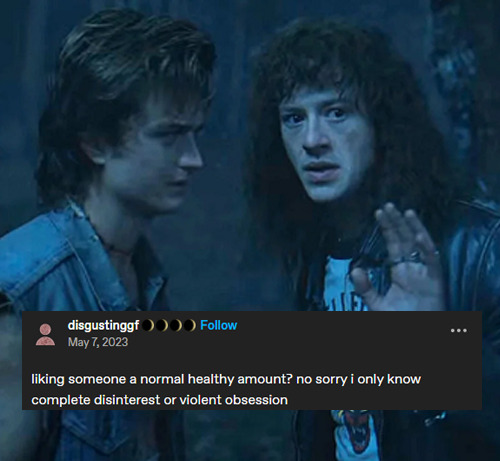

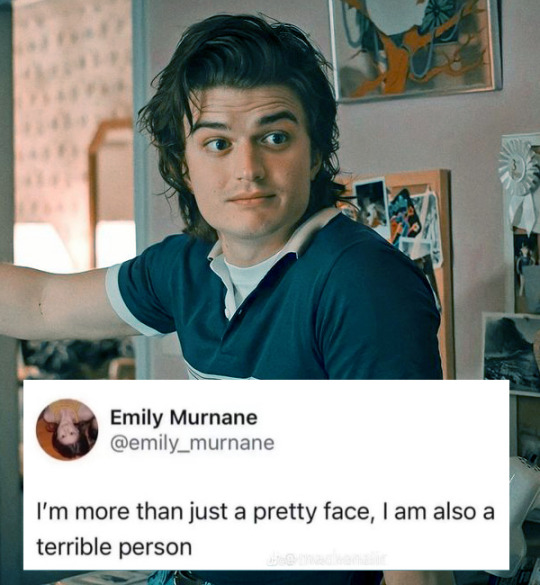
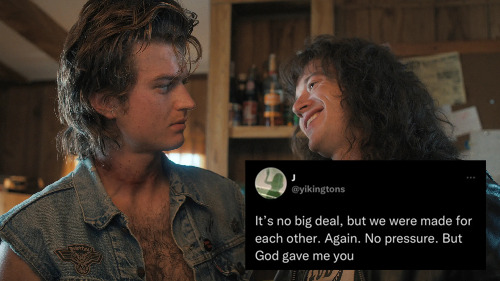





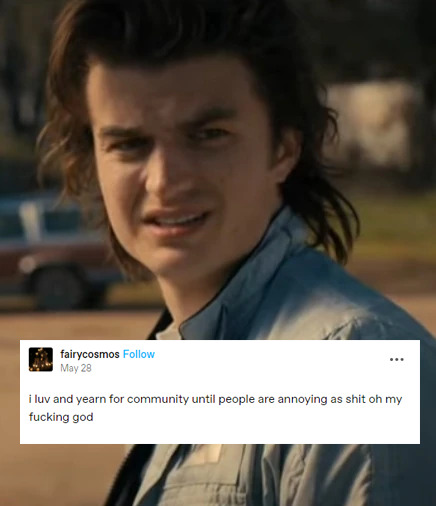
#this took forever#steddie#steddie textposts#steve harrington textposts#eddie munson textposts#steddie meme
491 notes
·
View notes
Photo

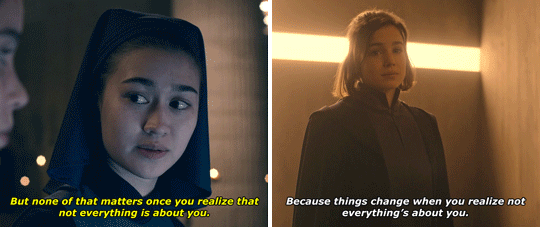








Warrior Nun - Avatrice
Ava and Beatrice before and after falling in love
A huge thanks to @raven618 for helping me figure out the scenes ❤️
#avatriceedit#warriornunedit#wngifs#wnedit#avasilvaedit#sisterbeatriceedit#avatrice#warrior nun#dailytvwomen#wlwsource#dailynetflix#ava silva#sister beatrice#myedits#this took forever#luckily i have avatrice crazy bff who was more than willing to help :D#thanks boo! :)#i call her my avatrice library :D#and she wears that title proudly :D#also look at those two smitten morons <3#so much has changed for them once they fell in love#also Camila noticing it already in first season and calling Bea out openly in second... shes their biggest fan :D#right after my bff and me :D
4K notes
·
View notes
Text
Lots of info for Will Wood fans.
One of the first stage names he went by was William Sunshine, and he was part of a band called A Verbal Equinox, they released one album in 2013 and they broke up.
He released two albums under the name Will Wood and The Tapeworms in 2016, Everything is a Lot and Self-ish.
in 2019 he released a cover of Prince Ali to help with an album called D*sn*y is Birth Control under the name Will Wood and The Land Pirates.
Also in 2019, the first episode of the podcast The Life In The World To Come was released.
in 2020 he released a mockumentary called The Real Will Wood.
Also in 2020, he released remastered versions of Self-ish and Everything is a Lot.
Then AGAIN in 2020, he did The Normal Album under the name Will Wood.
In 2022 he did Incase I Make It, and Camp Here & There which was for a podcast. (of which I haven't researched much.)
In 2023 he released In Case I Die, which was a collection of his live performances, and then took his indefinite break from creating music.
While he no longer does music, The Life in the World To Come still updates regularly.
#IF IM MISSING INFO RB AND TELL ME!!#this took forever#im mentally ill#and queer#stfu#will wood#will wood and the tapeworms#timeline#will wood fandom#music#jinxx behind the scenes#WILL WOOD#william woodiam#wwattw
497 notes
·
View notes
Text

little puggle's first big stretch
#this took forever#cute#Knuckles the Echidna#baby Knuckles#Knux#Baby Knux#sonic fanart#knuckles fanart#sonic fan animation#fan animation#fanart#my art#my animation#puggle#baby echidna
867 notes
·
View notes